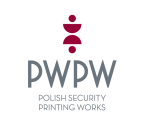PWPW has been conducting research aimed at developing better and better security features for identification documents. This is particularly important for the State security and requires system solutions where the key role is played by biometric techniques. Extensive technical capacities as well as own research laboratory equipped with state-of-the-art biometric devices make it possible for PWPW to develop and implement even more perfect solutions in the area of automatic user recognition. PWPW has broad experience in the implementation of biometric technique into already existing systems.
In 2005, PWPW, in co-operation with the Ministry of Foreign Affairs, launched a pilot project consisting in the issuance of biometric passports. Experience gained in this project was used to develop a system for personalisation of biometric passports for Lithuania (project launched in 2007). As part of the contract, PWPW delivered complete biometric passport booklets classified as one of the best secured documents in the world, together with a system for electronic and visual personalisation.
The gained knowledge helped PWPW upon implementation of a complex system for the issuance of Polish passports with two biometric features. From 28 August 2006, the first feature was introduced into the passports, i.e., a biometric face photograph.
The introduction of fingerprints (the second biometric feature) into the passport was preceded by launching a pilot system to produce a fully functional solution. On 29 June 2009, the target system of passports with two biometric features (i.e., face photograph and recorded fingerprints) was launched.
As part of its export activities, in 2011, PWPW signed an agreement on implementation of a complete production system for identification documents and biometric passports in the Republic of Armenia. We delivered equipment for over 60 remote passport offices, supplied machines, hardware and software for the Personalisation Centre and provided day-to-day servicing.
Thanks to the knowledge and experience of our experts, since 2013 we have been participating in establishing a passport system in Bangladesh.
Experience gained upon the implementation of biometrics in large-scale systems together with further research and development work constitute perfect references for future projects. To present our capacities and skills, we have opened an exhibition in the main building of PWPW where our potential clients may learn more of biometric techniques offered by PWPW.








